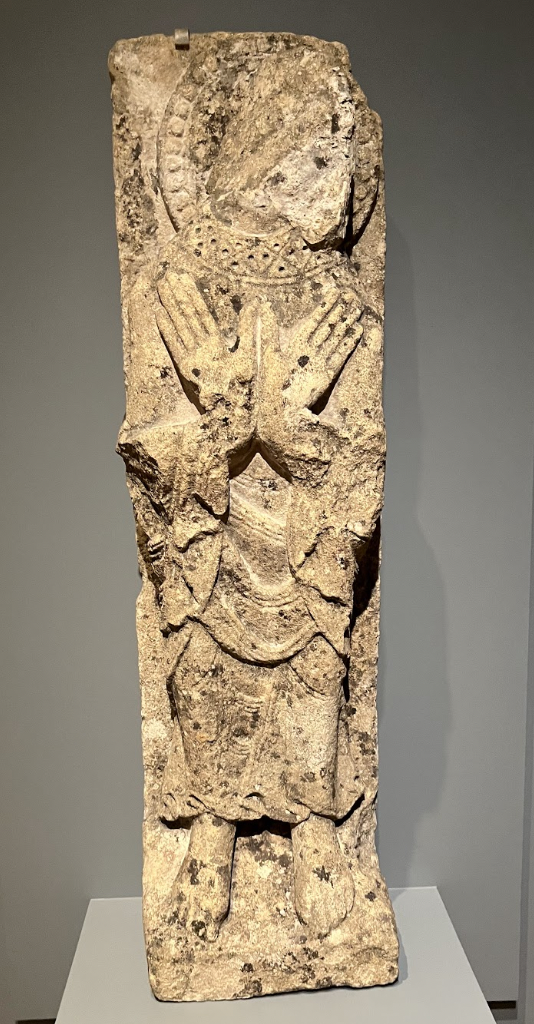Exploring Modern Exhibits of Medievalism at the RISD Museum
By Brian Conway ’23

Since visiting the RISD Museum this past Sunday, December 4th, I have had time to reflect on the incredible exhibits I witnessed throughout the museum and particularly in the Medieval section. One of the older pieces I came across was a limestone statue of an Apostle which was found on the exterior of a medieval church in France (pictured left). The statue likely was one of many facing towards a central figure of Christ. Its creator is unknown but it is titled “Apostles” and it was made sometime around 1110. The figure is displayed with its hands up in a form of worship towards Christ, and if you look closely towards the top you may notice little bead-like shapes forming a halo around the head. These are symbols of devotion, inspiring churchgoers to worship God in a similar way. The sculpture also includes a long robe which is inspired by Roman sculptures as a form of classicism.
The first thing that amazed me about this piece is how old it is. Yes, there is some damage to it, but I still think you can make out the important details easily and it was incredible to stare at a 1,000-year-old sculpture right in front of me. Upon reflection, I understand why members of this church would have done the same, admiring the artistry in this piece while looking towards this Apostle for inspiration and worship. It is also a representation of the symbols used at the time to display devotion to Christ. The beauty in this is the fact that we get to experience such incredible art from so long ago that serves the universal purpose of worship towards Christ.
Viewing this intricate sculpture that was once just one small piece in a likely enormous church made me think of the Gothic architecture we learned about in our Victorian Medievalism class, and I thought about the cultural significance of such eloquent religious structures. Nowadays, we build churches with cheap budgets mostly made of brick or other basic materials, and we have therefore lost the beauty that churches were once characterized by (particularly thinking back to Old St. Paul’s Cathedral in London that we learned about in class). Viewing this sculpture in the RISD museum not only taught me about the religious symbolism of the medieval period, but it made me think of this admiration for art and beauty in a religious context. Perhaps we can learn something from this method of artistic and religious expression that was so prevalent in the medieval period. I am grateful that people have preserved pieces like this one so that we have the pleasure of learning from them today (or, at the very least, the pleasure of enjoying them).





